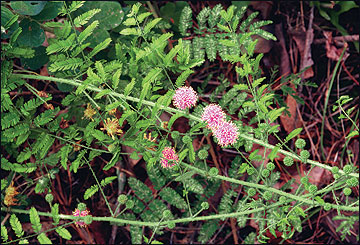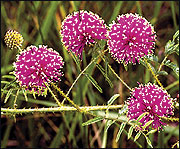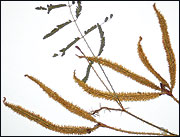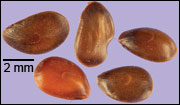Sensitive brier
- Mimosa quadrivalvis var. nuttallii
- Devil's shoestrings, Mimosa
Forb
Stems trail along the ground and are covered with short, hooked barbs.
©Ted Bodner, USDA-NRCS Plants Database
Description
This trailing legume of dry prairies, glades and rocky savannas has a distinctive appearance. The prostrate stems are covered with hooked barbs. Doubly compound, featherlike leaves close rapidly when touched or disturbed. Flower clusters are just as distinctive, a fuchsia ball dotted with contrasting yellow stamens. Like the stems, seedpods are covered with barbs, but when opened reveal many seeds about 1/8 inch across.
Bloom period
May to September
Use by bobwhites
A legume, sensitive brier is used by bobwhites as a food source and as a component of brood habitat. Quail nests have been found in and under sensitive brier, where it may afford better protection from predators than plants without the sharp thorns.





